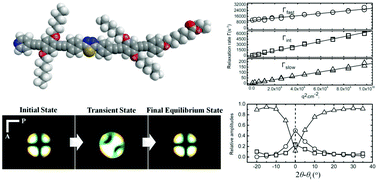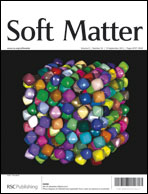Search for biaxiality in a shape-persistent bent-core nematic liquid crystal
Abstract
Using a range of optical techniques, we have probed the nature of orientational order in a thermotropic bent-core liquid crystal, which features a shape-persistent molecular architecture designed to promote a biaxial nematic phase. In the upper range of the nematic phase (enantiotropic regime), dynamic light scattering reveals strong fluctuations attributable to the biaxial order parameter, in addition to the usual uniaxial director modes. Assuming a Landau-type expansion of the orientational free energy, we estimate the correlation length associated with these fluctuations to be ∼100 nm. At lower temperatures, and mainly in the monotropic regime of the nematic, we observe by optical conoscopy an apparently biaxial texture, which develops when the sample temperature is changed but then relaxes back to a uniaxial state over time scales much longer than observed in the light scattering measurements. A combination of fluorescence confocal polarizing


 Please wait while we load your content...
Please wait while we load your content...